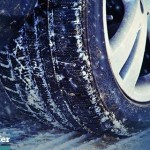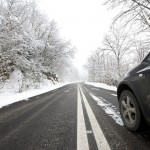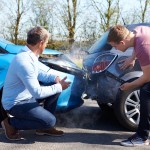
We have a lot to thank Scandinavia for: Ikea, The Killing and of course, Sarah Lund’s fabulous jumpers. And although our winters are no match for theirs, Ireland’s motorists could take a few pointers from their meticulous winter driving prep – especially heading into what some experts say will be the coldest winter in 50 years.
In Ireland, traffic grinds to a halt as soon as a few flakes fall but when it snows in Scandinavia, traffic generally runs as usual. But being snow-ready is something deeply ingrained in the Scandinavian psyche and there are laws in place to deal with winter. In all Scandinavian countries bar Norway, drivers are required by law to swap over to winter tyres, and in some places it’s compulsory to carry snow chains too. Roads are salted at the first sign of snow and ice, and after a heavy snowfall, local farmers as well as municipal workers are mobilised to clear the roads. Carrying the right kit isn’t optional either. In Norway, it’s compulsory to have at least one visibility vest in your car and in Sweden you must carry antifreeze, a shovel to clear snow, and a warning triangle. And in Nordic neighbour Finland, speed limits are reduced from October to March.
While we don’t have the extreme weather that the Scandinavians do, there are still plenty of useful tips we can take from them to get our cars winter-ready.
Get your tyres right
- Before your tyres come into contact with wet, snowy or icy road surfaces, you should make sure they are in perfect condition and have the right amount of air in them
- When the temperature reaches freezing, switch to winter tyres. Effective on slush, ice, frost and wet roads, winter tyres are made from a different rubber compound so they don’t harden in the cold, giving increased grip and greater safety. Note they should be fitted in sets of four to avoid affecting the balance and stability of your car
- Make sure your tyre tread depth is at least 3mm
- Consider carrying snow chains, but only use them when the road is covered in snow or ice, not on a gritted road, otherwise you risk damaging the road surface and your car
Put on your lights
Our winters are dark and gloomy, so it’s a good idea to drive with your lights on even during daylight trips.
Carry the right kit
- Before setting off, make sure your mobile phone is fully charged but remember to pull over if you need to use it.
- Take a flask of hot drink and some water.
- Take warm clothes and blankets.
- Take an ice scraper, brush, and old rags.
- Carry two warning triangles in case of difficulties.
- Carry antifreeze and a shovel to clear snow.
- Carrying spare headlight bulbs is also recommended.
Plan your journey
Before you set out, check the weather forecast, but don’t rely on it as conditions could change rapidly. When you’re on the road, reduce your speed and allow significantly more time to complete your journey when adverse conditions kick in. If it’s snowing heavily, ensure your headlights and number plates stay clear of snow, and if you’re on a long drive, pull over regularly for short breaks.
Of course, if the snow and ice does hit this winter, it’s much safer to stay home with a hot chocolate and the Borgen box set. But for those unavoidable journeys, we hope these tips will help you #DriveSafer.
——————————————————————
For more #DriveSafer tips, visit the Liberty Insurance Facebook and Twitter pages or check out Winter Ready, a helpful website from the Department of Defence.
Get a car insurance quote today from Liberty Insurance.








